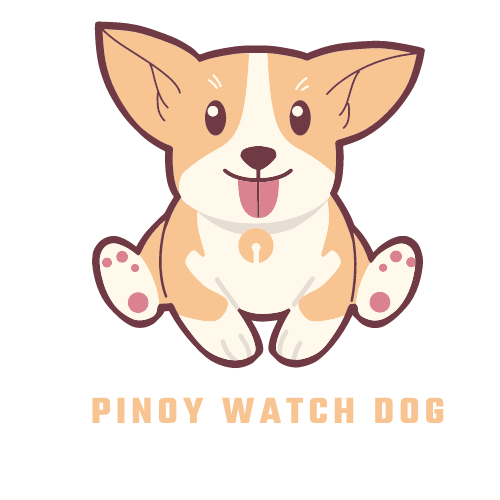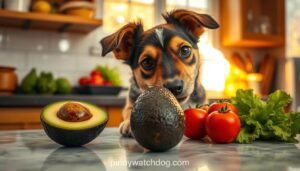Can Dogs Eat Raw Chicken Bones? learn about proper canine nutrition and the risks of raw feeding for pets. Many pet owners discuss what’s best for their dogs’ food, especially raw diets. They wonder if raw chicken bones are safe.
This guide aims to help by investigating the safety of raw chicken bones for dogs. Raw diets for dogs are becoming more popular. However, there’s still debate about the safety of raw chicken bones. This guide will explore the topic and provide well-researched information.
Key Takeaways
- Assessment of raw chicken bones as part of a dog bone diet.
- Impact of a raw diet on overall pet safety and canine nutrition
- Exploration of the pros and cons related to feeding dogs raw chicken bones
- An informative and balanced perspective on raw diets for pets
- Foundational understanding for pet owners regarding the safety of raw chicken bones for dogs
The Attraction of Bones to Dogs
Dogs are drawn to bones because of their canine instincts, which have existed for centuries. Experts say it’s not just the taste but also the nutrients bones provide that support the dog bone diet many owners use. The texture and density of bones also meet a dog’s need to chew. This aligns with natural canine behavior.
Bones have always been key in a dog’s diet, even in the wild. Gnawing on bones lets dogs healthily act on their instincts. It also helps with dental health by removing tartar and keeping them busy.
- Instinctual Satisfaction: Chewing on bones is deeply ingrained in dogs’ predatory lineage.
- Dental Benefits: Regular chewing helps maintain oral hygiene by scraping away plaque.
- Nutritional Enhancement: Bones are rich in minerals, notably calcium and phosphorus.
- Mental Stimulation: The activity keeps dogs engaged and mentally stimulated.
Adding bones to a pet’s diet can be a balanced way to nurture canine instincts. But, picking the right bones for safety and health is important.
| Bone Type | Benefits | Safety Considerations |
|---|---|---|
| Raw Beef Bones | Rich in nutrients, good for heavy chewers. | Choose large sizes to prevent choking. |
| Raw Chicken Bones | Softer and easier for dogs to break down. | Only safe when raw to avoid splintering. |
| Specially Prepared Pet Bones | Designed to be safe and digestible. | Ensure no harmful additives or treatments. |
Bones in a dog bone diet do more than just fill a nutritional gap. They satisfy an instinctual craving that’s key to a dog’s health. As we learn more about pets and their diets, bones remain a crucial topic.
Understanding Canine Nutrition and Raw Feeding
Exploring canine nutrition and raw feeding for dogs shows a delicate balance. This balance is key to keeping your pet healthy and full of life. We’ll look at the basics of a balanced raw diet for dogs and why bones are so important.
Basics of a Balanced Raw Diet for Dogs
A balanced raw diet for dogs focuses on variety and complete nutrition. It includes muscle meat, organ meats, raw bones, fruits, and veggies. This diet tries to match what wild dogs eat, aiming for a full nutritional package.
- Proteins and Fats: These come mainly from muscle meats and are vital for energy and growth.
- Vitamins and Minerals: Organ meats and veggies add important vitamins and minerals for organ health and overall well-being.
- Fiber: Fruits and veggies also give fiber, which helps with digestion.
The Role of Bones in a Dog’s Diet
Bones are a big part of raw feeding for dogs. They’re not just for minerals like calcium and phosphorus. They also help keep a dog’s teeth clean and strong.
When prepared right, bones can be safe and very good for a balanced raw diet for dogs.
It’s important to understand canine nutrition and how to add bones to your dog’s diet. With the right knowledge and care, switching to raw feeding for dogs can make your pet healthier.
Can Dogs Eat Raw Chicken Bones?
Many pet owners wonder if raw feeding for dogs includes chicken bones for dogs. The answer depends on the bone’s quality, the dog’s size, and its health.
Vets often talk about the risks of pet diet safety. But, raw chicken bones are softer and less likely to break than cooked ones. This makes them a topic of debate in raw feeding for dogs.
It’s important to talk to a vet who knows about raw diets. They can give advice tailored to your dog’s needs.
- Quality and source of the bones
- Individual dog’s digestion and health condition
- Monitoring and portion control by the owner
In summary, adding chicken bones for dogs to their diet can be good. But it should be done carefully and with a vet’s help. This way, we keep our pets safe and healthy.
Risks of Feeding Dogs Chicken Bones
Feeding your dog chicken bones might seem natural, given their ancestral diet. However, this practice comes with significant risks. It’s important to understand these dangers to prevent serious health issues and keep our pets safe.
Choking Hazards Presented by Chicken Bones
One major risk of feeding dogs chicken bones is the choking hazard. Cooked chicken bones can splinter easily. These sharp pieces can get stuck in a dog’s throat or further down, causing choking or severe discomfort. It’s vital to keep your pets away from these dangers.
Potential for Internal Injuries and Blockages
Chicken bones can also cause serious internal injuries in dogs. Sharp splinters can pierce the stomach or intestines, leading to painful infections or peritonitis. This abdominal inflammation can be deadly if not treated quickly. Intestinal blockages are another serious issue, often requiring surgery.
Bacterial Concerns with Raw Bones
Raw chicken bones, while less likely to splinter, still pose risks. They can carry harmful bacteria like Salmonella and Campylobacter. These bacteria can harm not just your pets but also other household members through cross-contamination. It’s crucial to handle raw bones carefully and source them from trusted suppliers.
Benefits of Chicken Bones in a Raw Diet
Adding chicken bones to a dog’s raw diet has many benefits. The nutritional benefits and dental health advantages are key. Let’s dive into these to see how raw bones help our furry friends.
Nutritional Advantages of Chicken Bones
Chicken bones are packed with minerals like calcium and phosphorus. These are crucial for a dog’s health and strong bones. They also have marrow, which is full of fat and nutrients. This gives dogs energy and offers nutritional benefits. Feeding chicken bones helps puppies grow strong bones. It’s great for their skeletal system.
Dental Health Benefits from Chewing Bones
Chewing on chicken bones is good for a dog’s teeth. It helps clean teeth, reducing tartar and plaque. It also keeps gums healthy. This natural chewing process is a big plus for oral health. Raw bones are a smart choice for keeping dogs’ teeth clean.
| Benefit | Description |
|---|---|
| Calcium and Phosphorus | Supports bone health and development. |
| Marrow | Offers fats and nutrients for energy and health support. |
| Mechanical Teeth Cleaning | Reduces dental issues such as tartar and plaque. |
Safe Alternatives to Raw Chicken Bones
Concerns about pet safety lead owners to seek safe bones for dogs or alternative dog chews. There are many options that let dogs chew without the dangers of raw chicken bones. It’s key to pick items that fit the dog’s size and chewing style.
Safe, commercial alternatives can meet a dog’s chewing needs without health risks. These include synthetic bones and non-edible chew toys made from safe, durable materials. Here, we look at some top choices that are safe and appealing to dogs.
- Rubber Chew Toys that are soft yet durable for safe chewing.
- Nylon Bones for strong chewers, in various sizes and flavors.
- Edible Chews that are digestible and add nutrients to a dog’s diet.
These options not only keep pets away from unsafe items but also help their health and teeth. They are great substitutes for raw bones.
| Product Type | Material | Benefit |
|---|---|---|
| Rubber Chew Toys | Synthetic Rubber | Teeth Safety & Durability |
| Nylon Bones | Durable Nylon | Long-lasting, Available in Various Flavors |
| Edible Chews | Food-safe Ingredients | Nutritionally Enhanced |
When choosing alternative dog chews, owners must ensure they are safe and fit their pet’s needs. It’s wise to watch your pet while they chew to catch any small pieces that could be a choking hazard.
Dangers of Chicken Bones for Dogs
Many dog owners worry about the dangers of chicken bones for dogs. This part talks about the risks of both cooked and raw bones. It also helps you know how to spot when your dog is in distress after eating bones. Knowing these risks can help avoid serious health problems and keep your dog safe.
Understanding Cooked vs. Raw Chicken Bone Risks
Talking about cooked bone risks, cooked bones are brittle and can splinter easily. These splinters can hurt your dog’s insides or even block their digestive system. Raw chicken bones, while softer, still pose risks like bacterial infections or choking.
Identifying Signs of Distress in Dogs After Bone Consumption
Here are important signs to look out for if your dog has eaten bones:
- Excessive drooling – Often a sign of nausea or oral injuries.
- Whining or howling – Indicates discomfort or pain.
- Pawing at the mouth – Signals a possible splinter or blockage in the throat.
- Lethargy – A sign of possible internal injuries or infections.
- Vomiting – This can indicate that sharp bone fragments are causing digestive distress.
Seeing these signs means you need to get your dog to the vet right away. This is to make sure they don’t have any serious or even life-threatening problems.
How to Properly Introduce Raw Bones to Your Dog’s Diet
Thinking about adding raw bones to your pet’s diet? It’s important to do it carefully to keep their raw diet for pets balanced and safe. This guide will walk you through the steps and precautions for introducing raw bones. You’ll learn how to assess your dog’s chewing abilities and keep their diet optimal.
Evaluating Your Dog’s Size and Chew Behavior
Before adding raw bones, check your dog’s size and how they chew. These factors help pick the right bones to avoid choking or digestive problems.
- Small Dogs: They need smaller bones to avoid swallowing big pieces.
- Large Dogs: They can handle bigger bones but still need caution.
Watch how your dog chews to choose the right bones for their diet.
Best Practices for Feeding Raw Chicken Bones
When feeding raw chicken bones, follow these best practices for your dog’s safety. Here’s a step-by-step guide to add this new food to their diet:
- Begin Gradually: Start with small bones and less quantity to see how they handle them.
- Supervision is Key: Always watch your dog when they chew bones to step in if needed.
- Maintain Dental Hygiene: Check their teeth and gums often for any signs of bone-related issues.
Raw bones can be good for a raw diet for pets, but safety is key. Always check your dog’s chewing abilities and take necessary precautions to keep them safe and healthy.
| Consideration | Advice |
|---|---|
| Ease of Digestion | Choose bones that your dog can digest easily, like chicken necks for smaller dogs. |
| Regular Monitoring | Watch your dog’s reaction to bones and adjust as needed. |
| Storage of Bones | Keep bones fresh and safe by storing them properly. |
In conclusion, by carefully introducing raw bones and watching your dog’s chewing habits, you can improve their diet. This will help their health and well-being in a safe and controlled way.
Expert Tips on Raw Feeding for Dogs
Switching to a raw diet for pets can be life-changing. It brings health benefits that processed foods can’t match. We’ve collected expert dog diet advice and tips on raw feeding. Our goal is to help dog owners who are thinking about this nutritional choice.
Starting a Raw Diet: Start by adding raw food slowly. Mix it with their current food and gradually increase the raw amount. This helps avoid digestive issues and lets you see how your pet reacts to the new diet.
- Analyze your dog’s health status: Before making the switch, make sure your dog is healthy. A vet visit is a good idea to check for any health issues that might get worse with diet changes.
- Protein variety: Use different protein sources like muscle meats, organ meats, and bones. This ensures your dog gets all the nutrients they need.
- Calcium and phosphorus balance: It’s important to keep these two elements in balance. Feeding bones, whether ground or whole, helps with this.
Following these tips on raw feeding helps you adopt a raw diet for pets smoothly. It also ensures a smooth transition that supports long-term health. Always talk to a pet diet expert to make sure the raw feeding plan fits your dog’s needs and health.
“Consistent monitoring and adjustment of the diet are key, as each dog’s nutritional requirements can differ significantly based on age, weight, and activity level.”
By following this expert dog diet advice, your journey to raw feeding will be successful. Remember, every pet is different. Their needs can change a lot, so personalizing their diet is very important.
Safe Bones for Dogs: A Comprehensive Guide
Keeping your dogs safe and healthy means paying close attention to their food. This guide helps you pick the right bones for them. You’ll learn which bones are safe and how to choose the best ones.
Types of Bones Considered Safe for Dogs
Choosing the right bones for your pets is key. Raw bones from beef or lamb are safer than chicken or pork bones. They are less likely to splinter. Big knuckle bones or rib bones are great because they are tough and fun for dogs to chew on.
How to Choose the Right Size and Type of Bone for Your Dog
It’s important to pick bones that fit your dog’s size and chewing style. Big dogs need bigger, denser bones. Small dogs should get lighter, smaller bones to chew safely.
| Bone Type | Size | Recommended for Dog Size | Benefits |
|---|---|---|---|
| Beef Rib Bones | 6-8 inches | Medium to Large | Dental Health, Rich in Marrow |
| Lamb Knuckle Bones | Variable | Small to Medium | Joint Health, Teeth Cleaning |
| Beef Shank Bones | Large | Large | Long-lasting, Nutrient-rich |
Always watch your dogs when they chew bones. This makes sure they are safe while they gnaw and chew.
What to Do If Your Dog Eats a Dangerous Bone
It’s scary when you find out your dog ate a harmful bone. Quick action and watching your dog closely are key to keeping them safe. Knowing when to get emergency pet care and how to watch your dog after they eat something bad is important.
Immediate Steps and When to Call the Vet
Start by figuring out how bad the situation is. If your dog is choking, acting strangely, or seems uncomfortable, call the vet fast. Not every situation is an emergency, but knowing when to call the vet is crucial. Signs like a lot of drooling, trying to vomit, or acting like their mouth hurts mean they need help right away.
Monitoring Your Dog After Bone Ingestion
Watching your dog closely after they eat something bad is very important. Look for any changes in how they act, like eating, sleeping, or going to the bathroom. If they seem tired, have trouble going to the bathroom, or are hurt when you touch their belly, call the vet. This helps catch problems early, like blockages or injuries, and get them the care they need.
By taking these steps and keeping an eye on your dog, you can handle emergencies and keep them safe after eating a bad bone.
Conclusion
The debate on raw chicken bones in dog diets is complex. Dogs naturally like bones, but owners must weigh the risks and benefits. Raw chicken bones can be good for dogs, improving their diet and dental health.
But, there are dangers like choking and infections. It’s important to know these risks.
For those who choose to give raw chicken bones, it’s crucial to be careful. Make sure the bones fit your dog’s size and chewing style. Always watch for signs of trouble.
Knowing what to do and when to seek vet help is key. This way, you can make sure your dog stays healthy.
In summary, raw chicken bones are not always bad or good for dogs. It’s about finding a balance. Good pet care means being careful and always thinking about your dog’s health.
FAQ
Can dogs safely eat raw chicken bones as part of their diet?
Whether dogs can safely eat raw chicken bones depends on several factors. These include the dog’s size, chewing behavior, and the bone’s size and condition. It’s important to watch your dog while they eat bones. This is to prevent choking, splintering, and bacterial contamination.
Always talk to a vet before adding bones to your dog’s diet.
Why are dogs naturally attracted to bones?
Dogs are naturally drawn to bones because of their wild instincts. Their ancestors ate whole prey, including bones, for nutrition. Chewing bones also helps with dental health and gives them a sense of satisfaction.
What are the basics of a balanced raw diet for dogs?
A balanced raw diet for dogs includes a variety of foods. This includes lean meats, organ meats, ground bones, fruits, vegetables, and supplements. These foods ensure your dog gets all the nutrients they need.
What role do bones play in a dog’s diet?
Bones are important in a dog’s diet for several reasons. They provide essential nutrients like calcium and phosphorus. They also help keep teeth clean by scraping away plaque. But, bones should only be given under a vet’s guidance to ensure they are safe.
What risks are associated with feeding dogs chicken bones?
Feeding dogs chicken bones can be risky. There’s a chance of choking, splintering, and causing internal injuries. There’s also a risk of bacterial contamination. It’s important to know these risks and take steps to avoid them.
Are there nutritional benefits to feeding dogs chicken bones?
Chicken bones are a good source of minerals like calcium and phosphorus. These are good for your dog’s bones and teeth. But, the risks must be weighed against the benefits. Always introduce bones carefully into your dog’s diet.
How can I provide a safe chewing experience for my dog without chicken bones?
For a safe chewing experience, use bone alternatives. Look for synthetic chew toys or dental chews. Make sure they’re the right size for your dog to avoid choking hazards.
What are the dangers of feeding dogs cooked chicken bones?
Cooked chicken bones are very dangerous. They can easily break into sharp pieces. This increases the risk of choking, intestinal blockage, or damage to the digestive tract. It’s best to avoid giving them cooked chicken bones.
What are the signs of distress in dogs after consuming bones?
Signs of distress after eating bones include gagging, drooling, and refusing to eat. They may also seem lethargic, uncomfortable, or have abdominal pain. If you see these signs, call your vet right away.
How should I introduce raw bones into my dog’s diet?
Introduce raw bones slowly and with caution. Choose bones that fit your dog’s size and chewing style. Always watch them while they chew and limit the time to prevent digestive issues.
What expert tips should I consider when feeding my dog a raw diet?
Experts suggest a slow transition to a raw diet. Watch your dog’s reaction and adjust as needed. Make sure the diet is balanced and get professional advice to fit your dog’s needs.
How do I choose the right bone for my dog?
Choose bones based on your dog’s size, age, and chewing strength. Opt for large, uncooked bones that can’t be swallowed whole. Avoid bones that can splinter easily. Always ask a vet for advice on the best bones for your dog.




